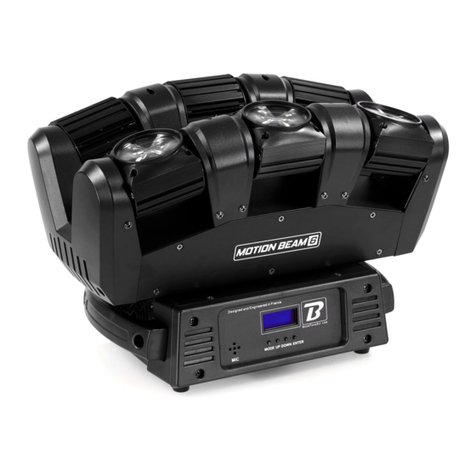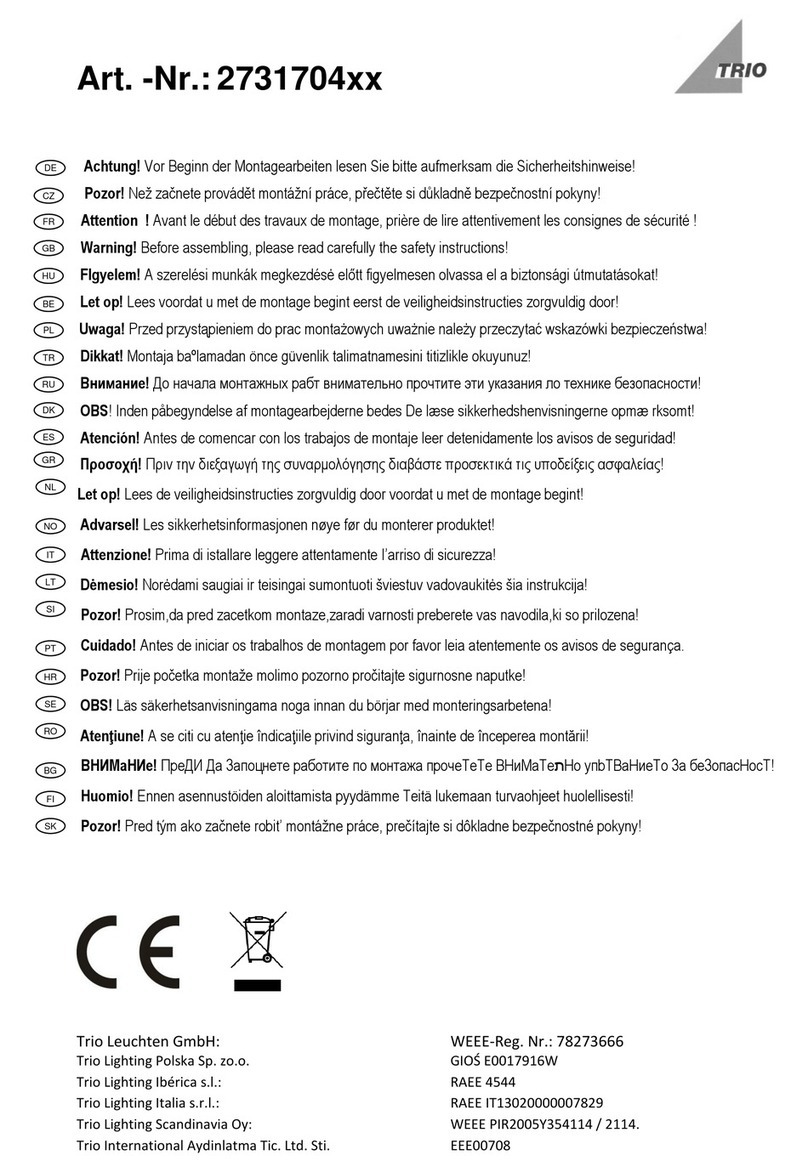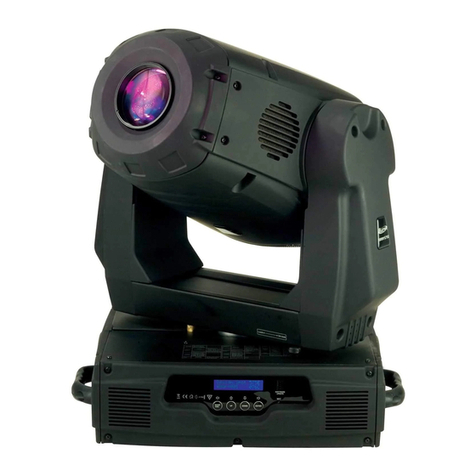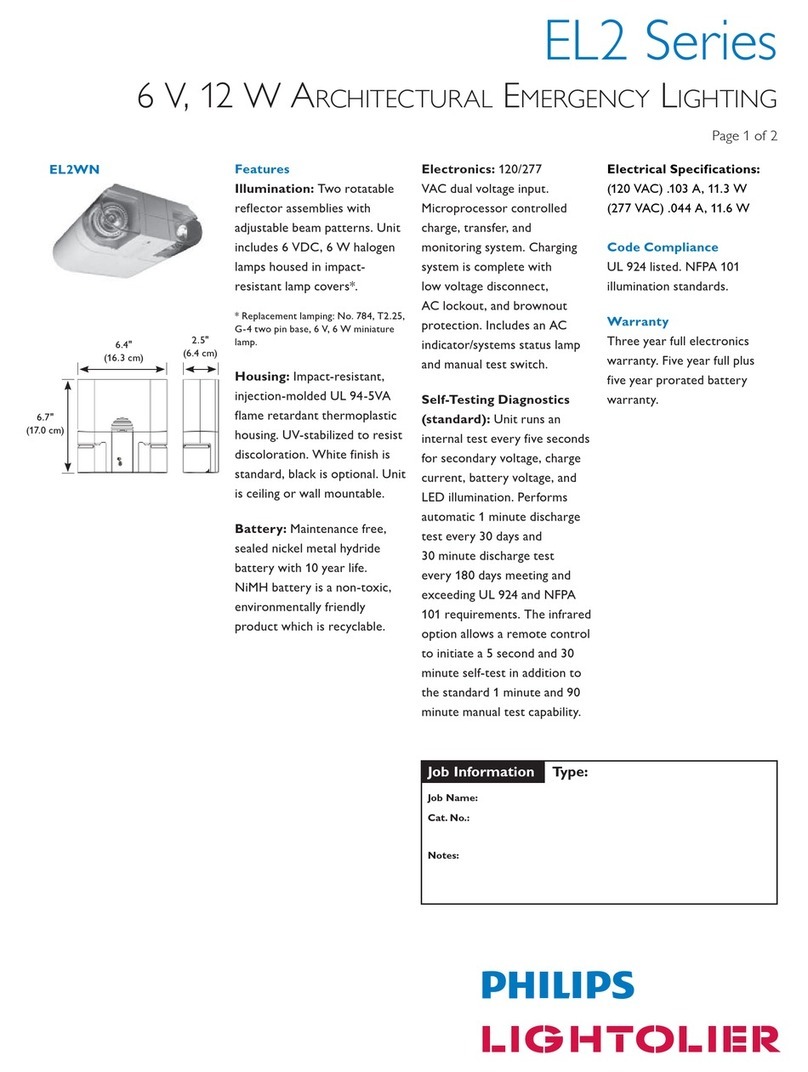PRISM+ REVEAL Profile User manual

RevEAL Profile with TrueSource®
Operating Manual
www.prismprojection.com
DRAFT - SUBJECT
TO CHANGE

Prism Projection Inc. - RevEAL Studio Operating Manual
1
This Manual applies to the following products:
RevEAL Profile - Dynamic Color, Standard Definition Lens -!P1-16K5-LXX-001
RevEAL Profile - Dynamic Color, High Definition Lens -!P1HD-16K5-LXX-001
Copyright © 2011. Prism Projection Inc. All Rights Reserved
Product Specifications and Information Subject to Change
The Product(s) and technologies described herein are protected by multiple issued and
pending patents.
“RevEAL” and “RevEAL - Revolutionary Entertainment and Architectural Lighting™” are
trademarks of Prism Projection Inc.
TrueSource ® and “Prism Projection - See what you’ve been missing. ®” are registered
trademarks of Prism Projection Inc.
Product, Service or Company names mentioned herein may be trade or service marks of
their respective owners.
Revised October 2011
Prism Projection, Inc.
8228 East 124th St. South
PO Box 448
Sully, IA 50251-0448
p: 641.594.3356

Table of Contents
Warnings & Product Specifications!4
TrueSource® Technology!5
Live Color Metering
Full Spectrum
Interfacing with Color
Optics
TrueSource at a Glance
Basic Installation!7
Mounting the product
Attaching Data and Power Cables
Beam Shaping!10
Adjusting Focus
Using Shutters
Rotating the Barrel
Pattern Projection!12
Pattern Image Size
Pattern Holders
Iris and Accessory Slot
Changing Beam Angles!14
Standard Lenses
High Definition Lenses
Interface Panel!15
Menu Tree
Fixture Address!17
Modes and DMX Channels!18
Color Modes
White (CCT)
Intensity
Advanced Settings!22
Energy
Algorithm
Reset to Factory Defaults
Channel Map
Prism Projection Inc. - RevEAL Studio Operating Manual
2

Standalone Control!24
TrueSource Screen!25
RevEAL Profile Assorted Recommended DMX Settings (8 bit
control)!26
Whites
All Colors
xy, CCT, ECO
RGB, CCT, ECO
HSI, CCT, ECO
RevEAL Profile CCT Channel Value Lookup Chart
Prism Projection Inc. - RevEAL Studio Operating Manual
3

Warnings & Product Specifications
Read This Manual Prior To Use
•This product is NOT for residential use.
•This product is intended for use by qualified individuals in the field of entertainment
lighting.
•This product is NOT to be used in wet locations.
•Due to risk of injury the safety cable MUST be attached while the product is
suspended.
•The product MUST be attached to the appropriate power, which meets the following
conditions:
•90-264 VAC
•47-63 Hz
•NOT for use on dimming circuits.
•Any attempt to disassemble or service the product other than described in this user
manual will void the warranty and may result in injury.
Prism Projection Inc. - RevEAL Studio Operating Manual
4

TrueSource®Technology
After significant research and development efforts, Prism Projection has solved many of
the problems associated with LED based lighting devices developing the TrueSource®
system. TrueSource assures color consistency by utilizing active live color metering,
achieves a full spectral response by using carefully selected multiple primary emitters
and provides a consistent flat field with next generation optics and reflector systems.
Live Color Metering
At the heart of every TrueSource system is a Tristimulus color sensor. Tristimulus
sensors, while electronic, actually “see” in a way that mimics the human eye’s response
to color. Even though every human sees color differently, there are well established
base lines for normal color response. By taking live measurements and adjusting how
each LED or group of LEDs is being driven, the problems of color shift during use are
removed. Tristimulus values are referenced to the well established CIE 1931 2°
observer color space. By referencing a standard, TrueSource systems are inherently
calibrated to each other. The problems of using only an initial calibration and predictive
algorithms are not an issue with TrueSource systems.
Full Spectrum
TrueSource systems use several colors of primary emitters. At the minimum each
TrueSource system will use 5 primary colors. These primaries are carefully chosen to
minimize the valleys of the SED curve. When outputting 3200k “white”, TrueSource
systems have a CRI of 95+. With deep understanding of how to drive each individual
LED, TrueSource is not locked into only using a fixed number of primary emitters.
TrueSource is also flexible enough to utilize LEDs from several manufacturers at once.
With this discreet control, TrueSource systems can pick from the best available LEDs on
the market.
Since all TrueSource enabled instruments are structured to provide a full spectral
response, they have a very wide gamut.
Interfacing with Color
TrueSource systems allow the designers and operators to ask for and interface with
color in very specific ways not normally seen in current lighting equipment.
Instead of asking designers to describe color in a non-standardized way, ie. unknown
RGB values, RGBW, RGBA, RGBCA, or seven discreet primaries. TrueSource
Prism Projection Inc. - RevEAL Studio Operating Manual
5

instruments can be configured to respond directly to x,y coordinates on the CIE 1931 2°
color space. An RGB mode that is based on the NTSC gamut, but slightly wider is
available. The designer may also elect to use Hue and Saturation to describe the
desired color. Each of these modes uses a dedicated dimmer channel that does not
shift the color. Designers may also add a specific Correlated Color Temperature channel
(CCT). The CCT channel takes over from the other color channels, not by adding white,
but producing specific white points along the black body curve.
Optics
The TrueSource optical systems are truly the next generation of optical design. The
beams are flat, and fully collimated.
Each unit produces one shadow. A shadow that would be expected from a traditional
source or natural sunlight. Of course diffusion can be added to soften or adjust the
shadow, instead of starting from an unfamiliar shadow.
TrueSource at a Glance
•References international standards to describe color, CIE 1931 2° observer
•Uses multiple primary emitters to ensure full spectrum response
•Live color monitoring using Tristimulus sensor, sensing color similar to the
human eye
•Wide gamut from one lighting instrument
•CRI above 95
•CCT Channel (as low as 1,800k up to 10,000k)
•Independent dimmer channel with no color shift
•A shadow that matches conventional sources
•5 year warranty that includes color
Prism Projection Inc. - RevEAL Studio Operating Manual
6

Basic Installation
Before installing this product please make sure that you have read all warnings and
safety information provided in this manual.
Caution: The product must be placed/mounted on a rack, shelf, or other suitable
surface that is rated to support the weight of the product.
The product must also be placed such that the safety cable can be attached. The safety
cable must be attached in such a way that it can not be removed without releasing the
clip.
The safety cable should be attached at all times during both installation and removal of
the product. Attaching the safety cable should be the first step before installing the
product and the last step after removing the product.
Mounting the product
Step 1:Install a c-clamp or other appropriate rated pipe coupling device to the steel
yoke of the RevEAL Studio Instrument.
Step 2: Loop the safety cable through your support, such that after clipping the
carabiner the loop cannot slip off of your support.
Step 3: After ensuring that the loop cannot slip off of the support, clip the carabiner to
the safety cable.
Step 4: Position the mouth of the c-clamp over your intended mounting surface. Once
you are happy with the location, tighten the clamp until the product is secured to the
surface.
Caution: The product should never be installed without the proper use of the safety
cable.
Prism Projection Inc. - RevEAL Studio Operating Manual
7

Adjusting Yoke Height
To facilitate some mounting orientations, it may be necessary to
extend the yoke. DO NOT ATTEMPT WHILE THE INSTRUMENT IS
HANGING.
1. Loosen the lock nuts on either side of the yoke.
2. Slide the yoke to desired extension.
3. Be sure to tighten lock nuts on both sides of the yoke.
Attaching Data and Power Cables
Note: This lighting fixture can be used individually or modules can be daisy chained. In a chain
of fixtures each module can be individually addressed, or each can have its own address
wherein each fixture is independent of the others.
Step 1: If Needed attach an appropriate connector to the end of the power cord
included with the product. Any connector you attach to the end of the product must be
rated for 15 Amperes and 250VAC, and of the grounding type. The conductors in the
power cable are color coded for ease of assembly.
Wire Color!Conductor function
Green or Green with Yellow Stripe"GROUND
Blue or White"NEUTRAL
Brown or Black"LINE
Step 2: After attaching the appropriate connector to the power cord you can attach the
power cord to the fixture. The power cord will go into the power-in port (blue). Slide the
connector into the port and twist the connector clockwise.
Step 3: Now that the unit has power you need to provide data to the unit. This is done
by plugging in an approved 5 pin DMX cable. The data-in port is found on the rear, of
the fixture. If you have daisy chained your units, data-in from your second unit should
Prism Projection Inc. - RevEAL Studio Operating Manual
8

come from the data-out port of the first unit. Continue attaching cables in this fashion, 1
to 2, 2 to 3, and so on. Follow best practices for DMX wiring, Do not exceed
recommended cable lengths or number of receivers on a chain.
The unit may also be controlled via ArtNet. Contact Prism Projection for details.
Prism Projection Inc. - RevEAL Studio Operating Manual
9

Beam Shaping
Adjusting Focus!
The lens focus of the profile is adjusted by the focus knob on the bottom of the lens
area, towards the front of the instrument. Loosen the focus knob then slide the lens sled
to the desired focus. Be sure to tighten the focus knob once you are satisfied with the
focus.
Using Shutters
RevEAL Profiles have a tri-plane shutter system. The top and bottom shutters are on
the same plane, while the side shutters are on independent planes. The top and bottom
shutters may be inserted far enough to touch each other and block all light.
Each shutter has a wide enough opening to be inserted at 45° allowing for most
“racked” cuts. Some caution should be used when inserting cuts at extreme angles, it is
possible to dislodge the shutter from it plane.
Prism Projection Inc. - RevEAL Studio Operating Manual
10

Rotating the Barrel
The lens train, shutters and gobos may be rotated to achieve the desired position. Use
the knob located on the right hand side, when looking down on the instrument, to front
of the yoke. Loosen the barrel rotation knob, rotate the front of the instrument to desired
position and retighten the barrel rotation knob.
Prism Projection Inc. - RevEAL Studio Operating Manual
11

Pattern Projection
Pattern Image Size
The RevEAL Profile uses the M sized Gobos or patterns. B sized gobos may be used
but only the middle area will be projected.
Pattern Holders
RevEAL Profiles, ship with a steel holder in the initial gobo slot. This holder may be
used for steel gobos, not glass. Without the holder the profile will project a square field.
Prism recommends the use of a glass holder designed to fit into the accessory slot.
B
O
u
t
e
r
D
i
a
m
e
t
e
r
M
O
u
t
e
r
D
i
a
m
e
t
e
r
B
I
m
a
g
e
A
r
e
a
M
I
m
a
g
e
A
r
e
a
Prism Projection Inc. - RevEAL Studio Operating Manual
12

Iris and Accessory Slot
RevEAL Profiles may use irises and other accessories designed for the Source Four.
Remember that only the middle area of a B sized gobo will be projected. The accessory
slot is covered by a sliding panel to reduce light leaks. To move the panel forward,
loosen the two philips screws, slide the panel and retighten the screw.
Prism Projection Inc. - RevEAL Studio Operating Manual
13

Changing Beam Angles
Standard Lenses
RevEAL Profiles are available with 14°, 19°, 26° and 36° beam spreads. To change the
beam spread of your Profile;
1) Locate the Lens Sled door on the front of the instrument.
2) Loosen philips screw and open the door.
3) Loosen philips screws on the top retention plate of the lens sled.
4) Remove existing lens.
5) Place new lens in the desired slot (labelled).
6) Replace retention plate, and retighten screws.
High Definition Lenses
High Definition Lenses occupy two slots on the lens sled. See instructions included with
the HD lens for details.
Prism Projection Inc. - RevEAL Studio Operating Manual
14

Interface Panel
Located on the rear of the instrument, all settings and options can be accessed by using
the button pad and LCD on the Interface Panel.
From startup the LCD will be illuminated and cycle to the Home Screen. Pressing either
the up or down keys will take the user to the other screens.
If the display is blacked out, pressing any button will illuminate the display’s backlight.
The Home screen provides an at a glance view of the instrument’s configuration and
current settings. Including if the fan is spinning, theDMX start address, how many
channels the configuration occupies, if DMX is being received, and the current values of
each control parameter.
All settings can be accessed by using the up, down, left and right buttons. When a
screen is highlighted use the check button to go to the highlighted section. Using the x
button will always go back up one level. If a selection allows for multiple choices, left
and right buttons will cycle through available options.
Prism Projection Inc. - RevEAL Studio Operating Manual
15

Menu Tree
Home Screen
"Fixture Address
""DMX Address (1 to 512)
""Art-Net Universe (0-0 to 15-15)
""Encoding (8-bit, 16-bit)
"Channel Personality
""Color (None, Cie XY, RGB, Hue+Sat, Dynamic)
""White (Disabled, Enabled, Correction)
""Intensity (Standard, Linear)
""Advanced Settings
"""Energy (Full Power, Remote, Eco/Fanless)
"""Refresh Rate (Medium, High, Remote, Low)
"""Algorithm (Brightness, Color)
""Reset to Factory Defaults
"Standalone Control
"TrueSource!
""Demo Mode
Prism Projection Inc. - RevEAL Studio Operating Manual
16

Fixture Address
Step 1: Using the up and down arrows select either “DMX Address”, “Art-NetUniverse”
or “Encoding”.
Step 2: Use the left and right arrow buttons to change the value of the selection.
DMX address may be 1-512, remember to leave enough room for the channels
contained in the block as defined by the features enabled.
When setting Art-Net universes, hold down an arrow key until the sub net changes.
Prism Projection Inc. - RevEAL Studio Operating Manual
17

Modes and DMX Channels
RevEAL Instruments with TrueSource offer unparalleled options in how they are
controlled. Ranging from simple one channel dimmed white light operation to obsessive
control of almost every aspect of the fixture. There are over 1900 possible personalities,
however determining which one is right for your show is straightforward and quick to
set.
Operating modes are set by using the button pad to navigate to the Fixture Personality
Menu. This menu allows the user to adjust; Color Mode, Color Temperature, Intensity
(dimmer curve) and select Advanced Features.
If advanced features are not set to remote, the color channels will be the first channels
available on the instrument.
Color Modes
Available Options: CIE xy, RGB, Hue + Sat, Dynamic, None
RevEAL instruments have 3 calibrated color modes, a dynamic color space mode and
the option to only use white. Use the up and down buttons to select “Color” then use
the left and right buttons to scroll through the available modes.
While RevEAL instruments contain 5 base colors of LEDs, they are controlled within
calibrated color systems. This ensures that the TrueSource TriStimulus sensor can
guarantee color match between instruments, over the life of the instrument.
Users may elect to use 16 bit control for color and intensity channels, from Advanced
Settings. 16 bit control is only recommended for users with advanced lighting consoles.
CIE xy
CIE x,y allows the user to select color from the CIE 1931 2° Observer color space.
Many Gel Manufactures have available CIE coordinates measured in the 1964 10°
Observer color space. These values will not generate the same colors as the 1931 2°
Observer color space. 2° values may be obtained with a color sampling device.
To determine the DMX decimal values for a given coordinate, simply multiply the
coordinate by 255. For example 3200K white light has an x value of 0.4254 and a y of
0.4044.
x value: 0.4254 x 255 = 108 (42%)
y value: 0.4044 x 255 = 103 (40%)
Prism Projection Inc. - RevEAL Studio Operating Manual
18

In 16 bit mode, the multiplier is 65535;
x value: 0.4254 x 65535 = 27878 (42%)
y value: 0.4044 x 65535 = 26502 (40%)
If the Color Temperature channel is enabled, the color temperature channel will “take
over” color control from the color channels. Generating white light in the Kelvin value
specified by the Color Temperature channel. To transition from a specific color
temperature to a specific color, use the x,y values for color temperatures found in the
Appendix.
CIE x,y DMX Map (8 bit control):
1st Color Channel
2nd Color Channel
x coordinate
y coordinate
CIE x,y DMX Map (16 bit control):
1st Color Channel
2nd Color Channel
3rd Color Channel
4th Color Channel
x course
x fine
y course
y fine
RGB
RGB mode allows for familiar Red, Green and Blue control channels. With all channels
full, white light will be produced. Unless changed in advanced settings or the color
temperature channel is set to remote, the default white point is 3200K. With all channels
at 0 no light will be produced regardless of the intensity channel’s state.
To translate from CMY values a general rule of thumb is to invert the values. ie:
Cyan = Red @ 0, Green @ Full, Blue @ Full
Magenta = Red @ Full, Green @ 0, Blue @ Full
Yellow = Red @ Full, Green @ Full, Blue @ 0
While not completely accurate, because of subtractive filter technology, this will help get
RevEAL instruments to a color near CMY based fixtures.
RGB DMX Map (8 bit control):
1st Color Channel
2nd Color Channel
3rd Color Channel
Red
Green
Blue
RGB DMX Map (16 bit control):
1st Channel
2nd Channel
3rd Channel
4th Channel
5th Channel
6th Channel
Red Course
Red Fine
Green Course
Green Fine
Blue Course
Blue Fine
Hue + Sat
Hue + Saturation mode is easiest to think of as common color pickers on photo editing
software, commonly abbreviated to HSI or HSL. The Hue channel defines an angle on
Prism Projection Inc. - RevEAL Studio Operating Manual
19
Table of contents
Popular Light Fixture manuals by other brands

Clevetronics
Clevetronics L10 LVP4LEDz-P Series Installation & maintenance instructions

ViSAGE
ViSAGE VIS0481 operating instructions
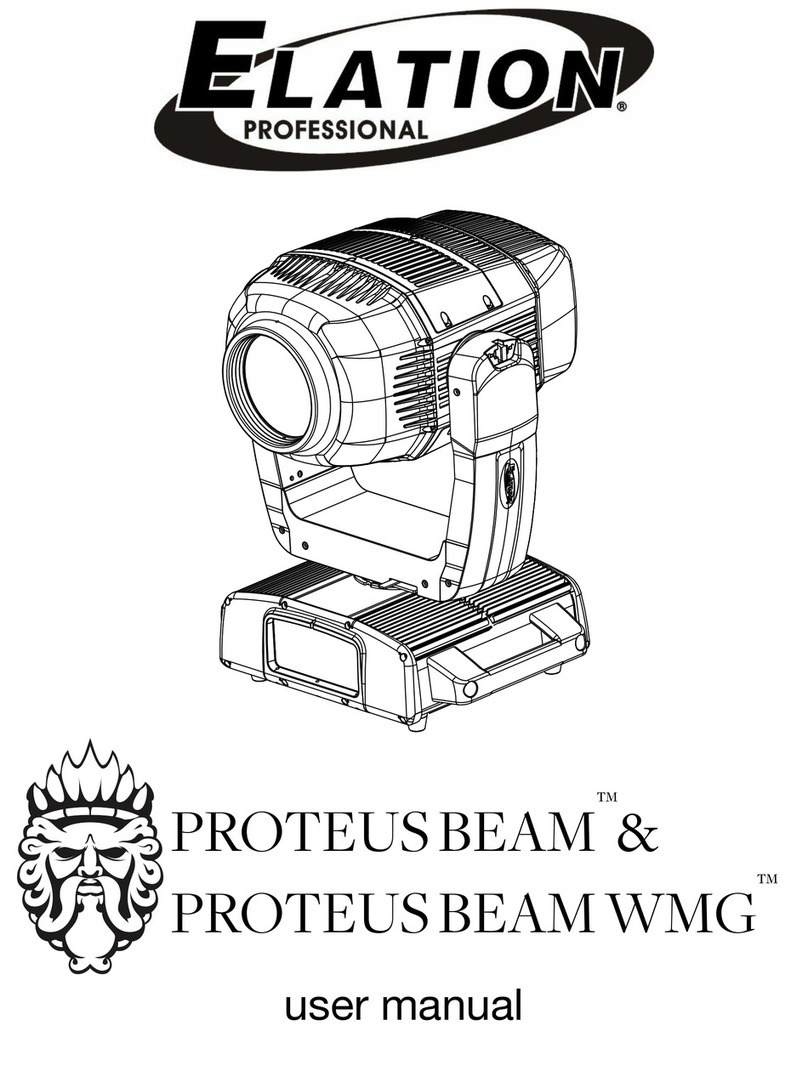
Elation
Elation PROTEUS BEAM WMG PRB162 user manual

Cooper Lighting
Cooper Lighting METALUX Decorative Circline Fixtures Specification sheet

RSA Lighting
RSA Lighting Combolight LV250MH Specifications
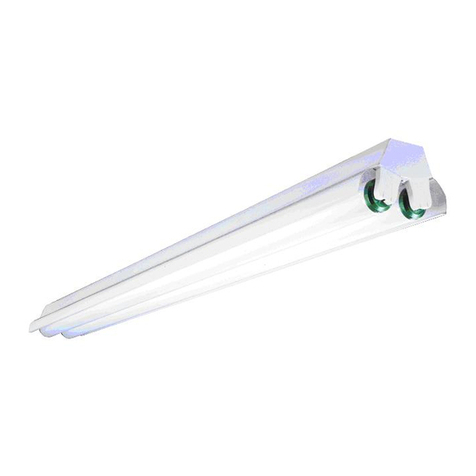
Cooper Lighting
Cooper Lighting METALUX 9232 Specifications

LUCIS
LUCIS MAIA LB Mounting instructions
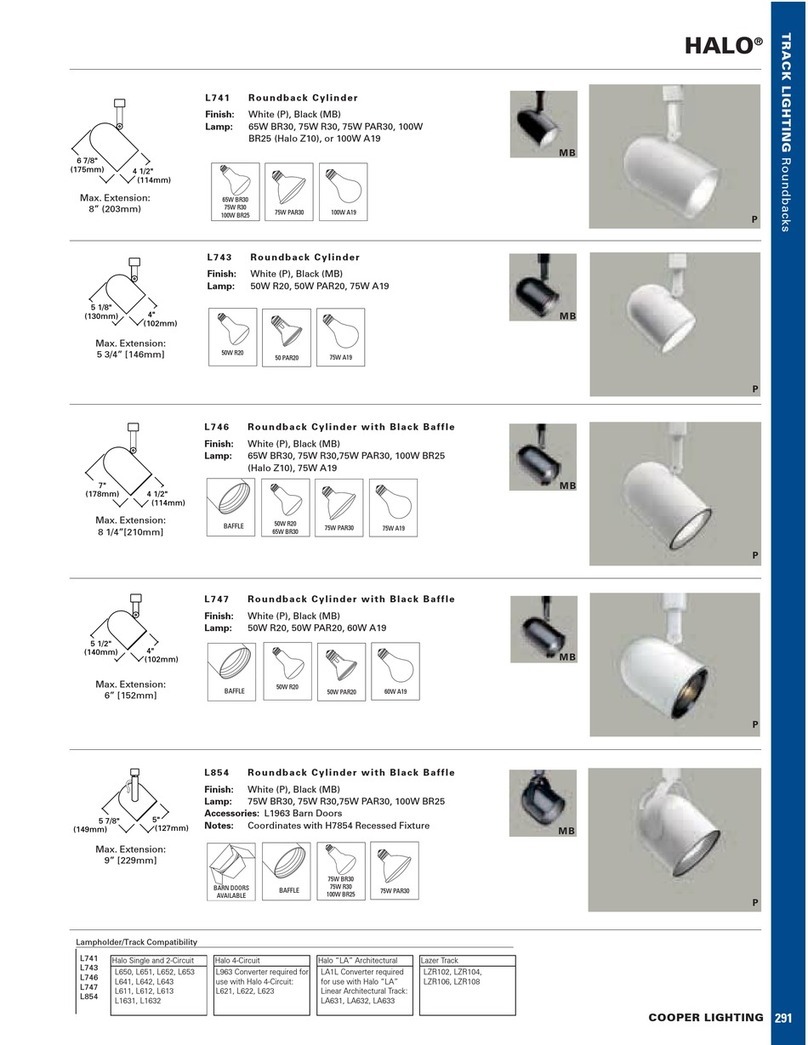
Cooper Lighting
Cooper Lighting Halo L741 Specifications

Atelier Pierre
Atelier Pierre Hakuna user manual
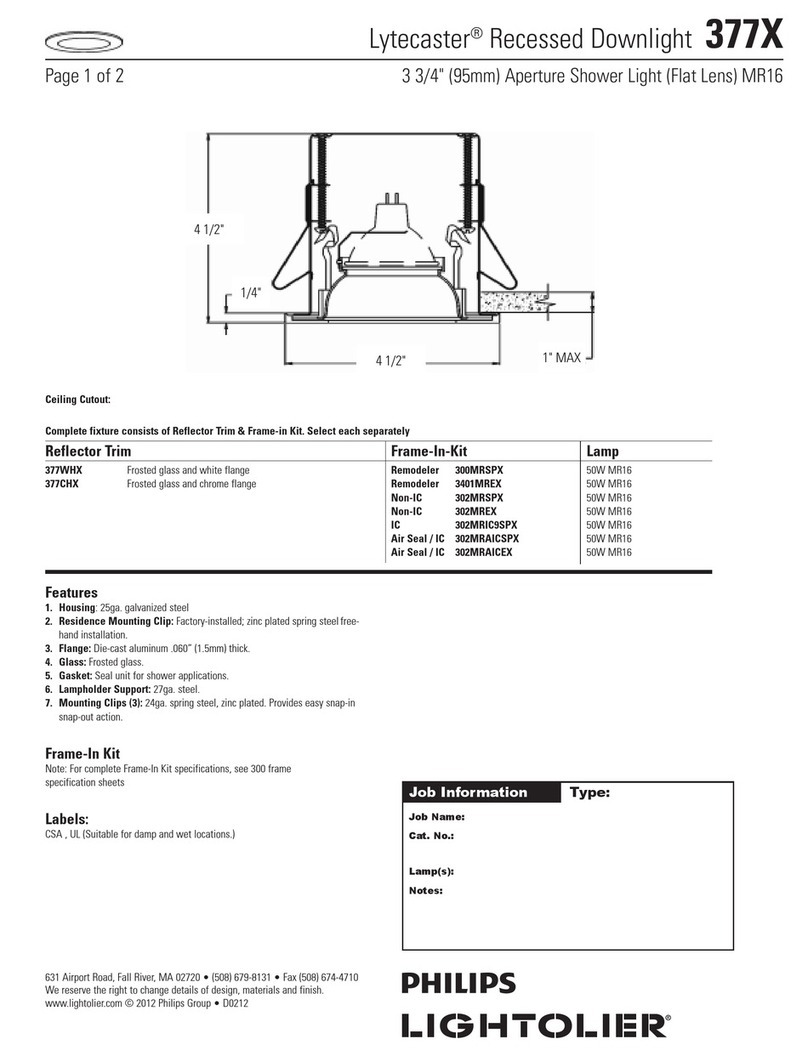
Lightolier
Lightolier Lytecaster 377X specification
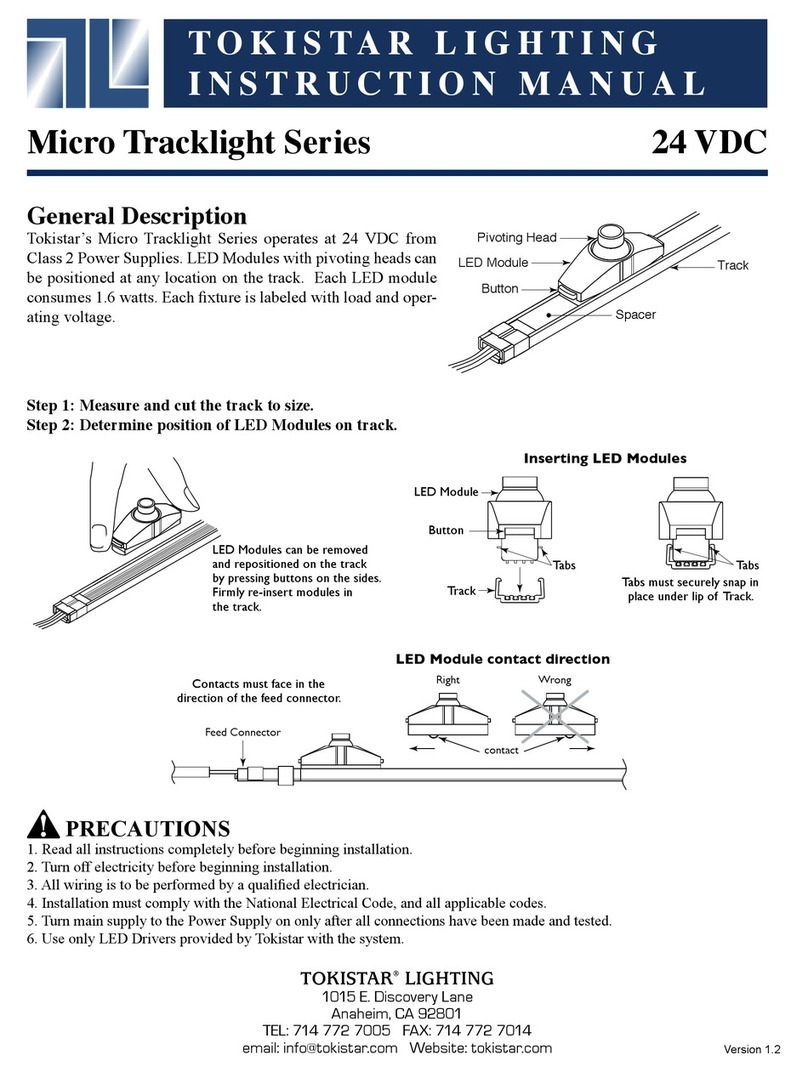
TOKISTAR LIGHTING
TOKISTAR LIGHTING Micro Tracklight Series instruction manual
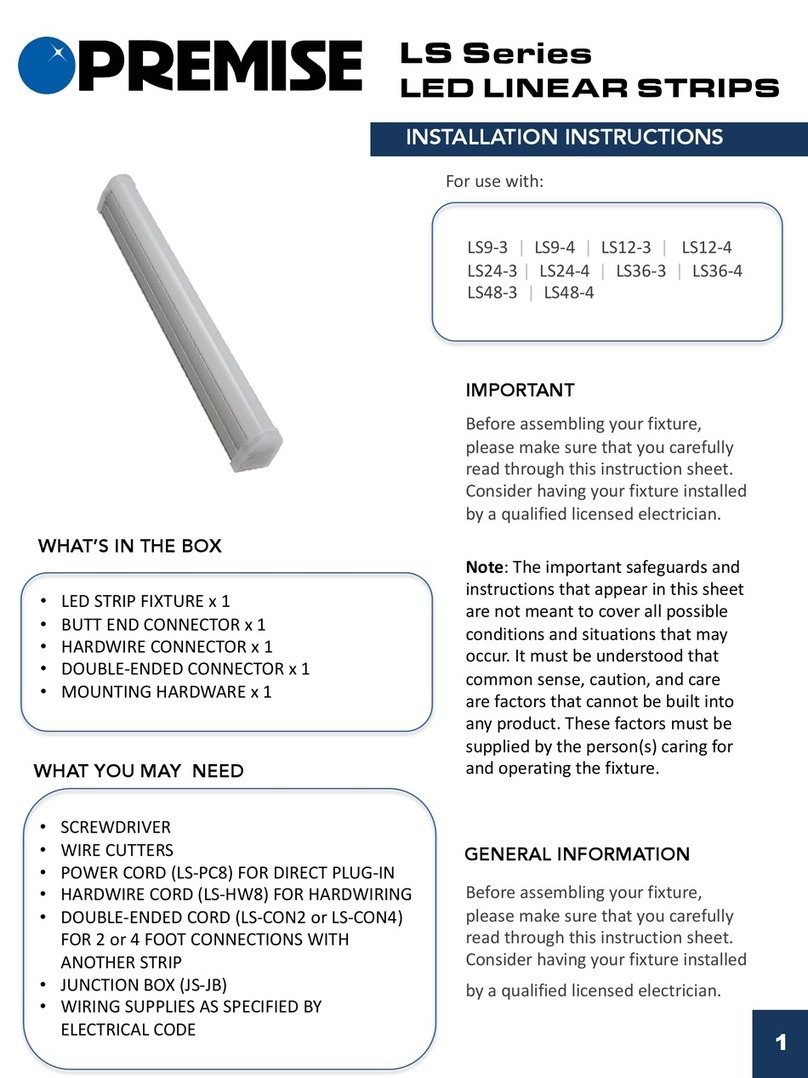
Premise
Premise LS Series installation instructions
